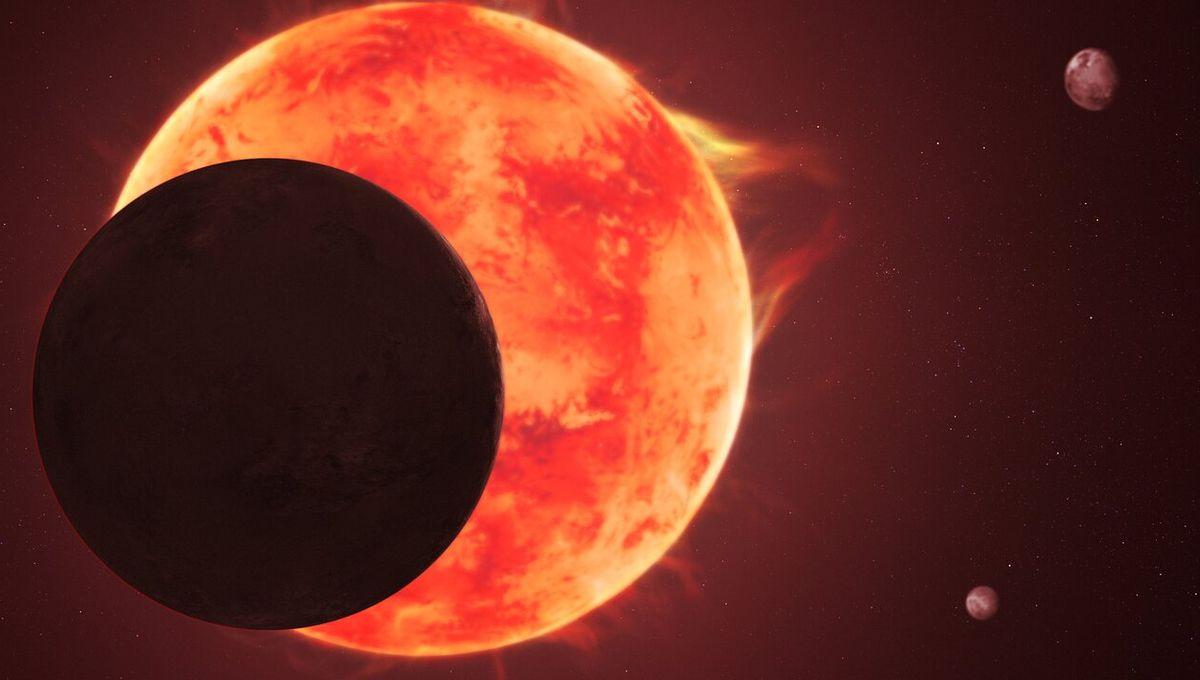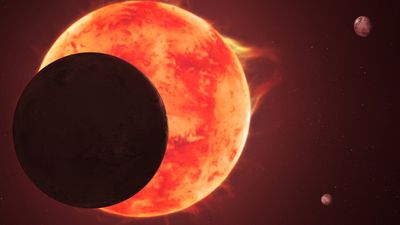The TRAPPIST-1 system is a multi-planetary system made of seven Earth-sized planets orbiting a cool red dwarf just 40 light-years from Earth. Of the seven, three planets sit in the habitable zone, the distance from their star where temperatures would allow for liquid water, making the whole system an object of great interest. Observations so far, though, suggest that Earth-like atmospheres might not be as common around this star, with another ruled out as an Earth twin.
The rest of this article is behind a paywall. Please sign in or subscribe to access the full content. Earth's atmosphere, which protects us from the Sun and keeps our water liquid, is crucial to conditions that allow life to flourish on our planet. Astronomers have been using JWST to work out the potential atmospheres of the TRAPPIST planets. So far, the data focuses on the three closest worlds to the star. It was first reported that the closest, TRAPPIST-1 b, has no evidence of an atmosphere, followed by the second closest, TRAPPIST-1 c, which also shows no sign of an atmosphere or, at most, has a thin Mars-like one. Now, researchers report on TRAPPIST-1 d, which sits at the inner edge of the habitable zone. Once again, the data doesn’t support the presence of the atmosphere. The team can rule out TRAPPIST-1 d as Earth’s twin or cousin. There is no evidence of water, methane, or carbon dioxide. The most likely scenario is that the planet has no atmosphere, though it's not impossible that there is something there that is quite unearthly. “There are a few potential reasons why we don’t detect an atmosphere around TRAPPIST-1 d," lead author Caroline Piaulet-Ghorayeb of the University of Chicago and Trottier Institute for Research on Exoplanets (IREx) at Université de Montréal, said in a statement. "It could have an extremely thin atmosphere that is difficult to detect, somewhat like Mars. Alternatively, it could have very thick, high-altitude clouds that are blocking our detection of specific atmospheric signatures — something more like Venus. Or, it could be a barren rock, with no atmosphere at all." The TRAPPIST-1 planets orbit much closer to their star than Earth does to the Sun. TRAPPIST-1 d is just 2 percent of Earth’s distance from the Sun. This proximity and activity might make holding on to their atmospheres a very difficult task. Still, the four outer planets might surprise us, yet. TRAPPIST-1 e, f, and g are the ones in the habitable zone, and maybe even TRAPPIST-1 h could be a cold, but interesting world. “All hope is not lost for atmospheres around the TRAPPIST-1 planets,” Piaulet-Ghorayeb said. “While we didn’t find a big, bold atmospheric signature for planet d, there is still potential for the outer planets to be holding onto a lot of water and other atmospheric components.” Astronomers wait for the planets to pass in front of their star to try and capture some of the starlight filtered through the possible atmosphere. Unfortunately, the colder environment of the outer planets is a challenge even for a telescope such as JWST, so a lot of observations are needed. “Webb’s sensitive infrared instruments are allowing us to delve into the atmospheres of these smaller, colder planets for the first time,” said Björn Benneke of IREx at Université de Montréal. “We’re really just getting started using Webb to look for atmospheres on Earth-sized planets, and to define the line between planets that can hold onto an atmosphere, and those that cannot.” The study is published in The Astrophysical Journal.





